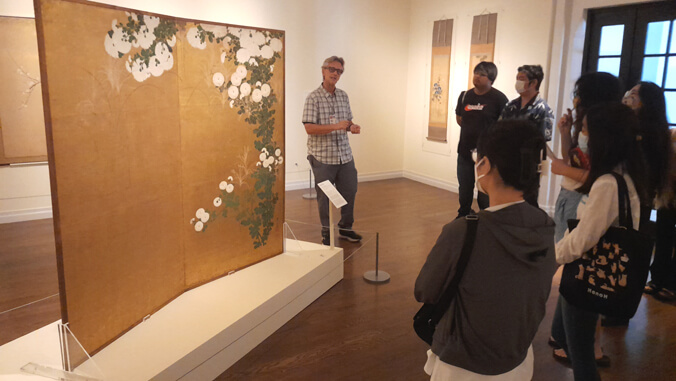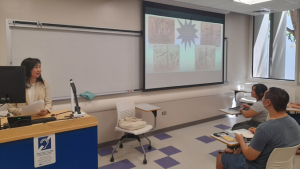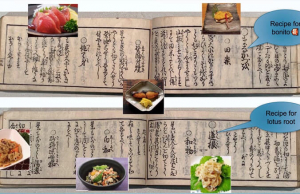
A collaborative project between the University of Hawaiʻi at Mānoa Department of East Asian Languages & Literatures (EALL) in the College of Arts, Languages & Letters and the Honolulu Museum of Art (HoMA) will provide students the opportunity to help catalog one of the most important archives of Japanese rare books and prints in Hawaiʻi.
At the end of the fall semester, EALL students in Professor Pier-Carlo Tommasi’s Introduction to Classical Japanese course will conduct research projects and contribute to the cataloging of the Lane Collection, approximately 11,000 Japanese woodblock-printed books and manuscripts collected by late art dealer Richard Douglas Lane, a UH Mānoa alumnus.
“As a scholar and instructor, one of my goals is to diversify the field and provide students with community-building opportunities. Such activities lead them to reimagine their contribution to knowledge production, augmenting their skills and envisioning possible career paths both in the public and the private sectors,” said Tommasi.

This fall, HoMA Research Associate Kiyoe Minami visited the Mānoa campus to present to students about the collection, which features manuscripts such as makeup and hairstyles on trend during the Edo period (1603–1868), a 400-year-old mathematics manual on geometrics, and recipes for beginner cooks.
“It was sort of strange to learn that even if these items were from a few hundred years ago, they showed that the people of the time had similar interests as today, like fashion, health, fortune telling, manga and games,” said student Sho Tanaka. “[It] made me think about the importance of preserving, cataloging and displaying these historical items to better understand our history and where we come from.”
The HoMA–EALL collaborative project is meant to draw attention to the ways in which Hawaiʻi’s interconnectedness with Japan has, through the movements of the transpacific diaspora, helped shape the Hawaiian Islands’ culture. Under the guidance of UH Mānoa Emeritus Professor Robert Huey, UH has embarked on various collaborative initiatives with HoMA and the National Institute of Japanese Literature the last six years which has yielded workshops and projects.

On Saturday, October 1, Professor Tommasi’s class also went on a guided tour of HoMA’s exhibition, Japanese Design: Rinpa, which explores 17th century style paintings with compositional features such as asymmetry, innovative color combinations, contrasting patterns, and semi-abstraction.
“I could definitely sense the similarities and connections between the visual arts and language in a classical Japanese setting,” said student Sidney Ihm. “It is really cool to experience first-hand the connections between the literature and the visual art aspects of classical Japan.”
The ongoing collaboration between UH, HoMA and NIJL has also paved the way for EALL to recently join the Global Consortium for Japanese Textual Scholarship, which aims to build a space for participating organizations to work together through online-based activities related to premodern Japanese texts, such as training human talent, sharing information, and exchanging opinions on databases.

